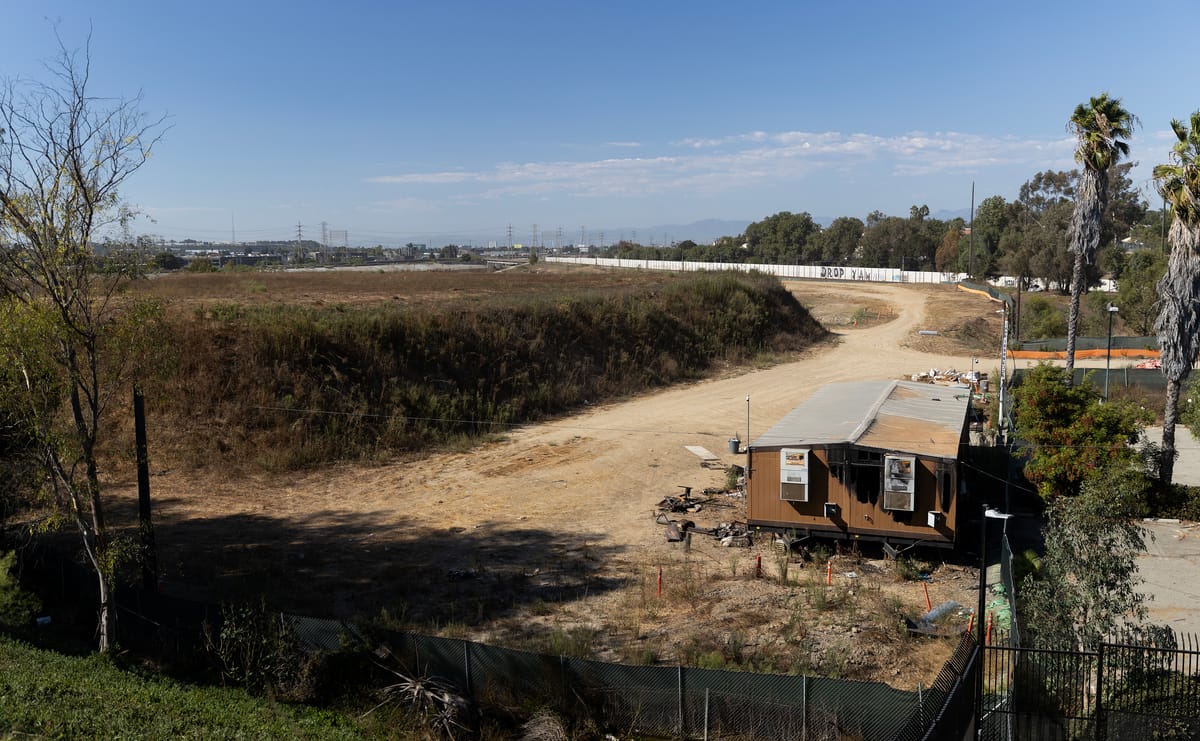Critically Speaking: Put a lid on it?
Looking over an 'engineered cap' and concerns over toxins at a proposed Long Beach storage facility.

It’s not uncommon for resident groups to oppose new developments in their part of town. You’re probably familiar with the term “NIMBY” (Not In My Backyard) but not all opposition is borne purely out of resistance to change.
The nonprofit community group Riverpark Coalition has been fighting a development along the Los Angeles Riverbed just north of the 405 Freeway for years where a developer has proposed to turn a former golf facility, which had served for decades as an oil wastewater site, into a storage facility.
Riverpark advocates for the environment along the lower Los Angeles River and has maintained that the city promised the parcel where the storage facility is being proposed as a future nature preserve and park.
It also fought a housing project directly south of the proposed storage facility but ultimately ended up settling with the developer after it dedicated the park that will be built inside the townhome complex as something that would be permanently accessible to the public.
However, the fight against the storage facility is ongoing.
The group successfully sued in 2021 to force the developer to complete an environmental impact report before any construction moves forward. That seems reasonable given the toxins that exist in the soil after decades of oil waste seeping into the ground.
This week I sat in on a community meeting where the California Department of Toxic Substances Control presented a draft plan on how the polluted soil at the site would be treated if the project moves forward.
The proposed response plan is over 800 pages of some of the most dense and technical verbiage describing the site and the projects. Some residents said it was not ideal to give them less than two weeks to read through the report.
But that’s often the case with large projects that are required to publish environmental documents to address real or perceived environmental issues.
And the answer to the toxic soil question in this project appears to be putting a giant cap on it.
Caps are basically barriers that are built between toxic areas and the space where humans are likely to be above the toxins. They use compacted clean soil, rocks, asphalt, and in the case of this proposed project, a waterproof sheet to deter water that does seep through the asphalt from interacting with the contaminated soil below.
In total, this cap will be two feet thick, according to the plan.
Landfills, toxic dumps and other superfund sites across the country have used caps to prevent the toxins below from affecting human activity above. The Environmental Protection Agency says caps are safe as long as they’re built correctly and properly maintained. But that doesn’t ensure that they won’t eventually fail and need repairs so monitoring of the caps is critical.
Riverpark has insisted that officials should clean up the site rather than simply put a cap on the issues posed by the decades of pollution. There are concerns that stormwater could eventually infiltrate the contaminated soil and carry toxins away from the site but the good news is that Long Beach, a city that heavily depends on groundwater, does not have wells anywhere near the project site.
But toxins like benzene, which can cause a range of health issues including cancer, have been detected in the topsoil at the site and are a concern to residents. If the project gets approved, the draft plan calls for the soil to be watered to prevent dust and for monitoring of the construction site to ensure that potentially harmful elements are not blown into neighboring homes, schools and parks.
Construction is supposed to cease on windy days, but the construction team gets to make the decision when it’s too windy, according to DTSC staff. The staff also noted that monitoring will be less during non-construction hours.
Of course, the site is currently exposed to the elements but it doesn’t have tractors moving contaminated soil around, and that worries residents. The Long Beach Planning Commission is expected to discuss the project again in October after the conclusion of the public comment period.
If you live near the project and want to chime in on the plan you have until Sept. 27 to respond. You can send your comments here.
What happened this week:
A developer had its plans to convert a 15-story office building Downtown into housing approved this week and that could clear the way for it to be part of a 275-unit development in the coming years. The former Union Bank building at the corner of Ocean Boulevard and Golden Shore is proposed to be part of a two-building project with former office space being converted into a mix of studio, one-bedroom and two-bedroom apartments with the developer planning to add another five stories of housing atop the parking structure that came along with the building when it was sold earlier this year. While adaptive reuse of older buildings is not uncommon in Long Beach, this could be the first large-scale conversion of a former commercial building since the City Council asked for the city to look at incentives for developers who are willing to convert underutilized office buildings into housing.
Something to keep an eye on:
The final budget presentation from individual departments to the City Council happened Tuesday and that clears the way for the council to begin the process of adopting the annual spending plan at its next meeting. While adopting the budget requires two votes—likely one next week and the final vote at the Sept. 17 meeting—any movement on the proposed budget will happen this week. That means all of the groups who have poured into city hall over the past few weeks to advocate for more spending on translation services in the city or to keep dozens of health department workers at risk of being let go employed will find out if those efforts have been successful. There isn’t a ton of wiggle room in this year’s budget given the city’s financial situation but it’s common for minor changes to be tacked on to the final budget document before adoption.

We need your support.
Subcribe to the Watchdog today.
The Long Beach Watchdog is owned by journalists, and paid for by readers like you. If independent, local reporting like the story you just read is important to you, support our work by becoming a subscriber.





